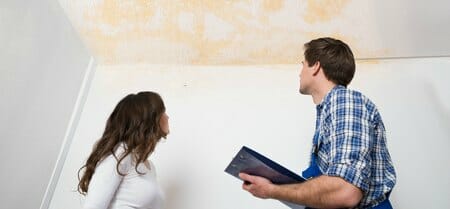Identify A Half-Dozen of Most Leak Factors Within Your Home
Identify A Half-Dozen of Most Leak Factors Within Your Home
Blog Article
Almost everyone seems to have their own unique perception about How to detect water leaks in your home.
Leaks not only cause waste of water yet can also create unnecessary damage to your residence and promote unwanted organic growth. By understanding as well as looking for everyday circumstances that cause leakages, you can secure your residence from future leakages and unneeded damages.
Encroaching roots
A lot of water leakages begin outside the house as opposed to inside it. If you discover an unexpected reduction in water pressure, claim in your faucet, take time to head out as well as examine your lawn. You might observe damp patches or sinkholes in your lawn, which might suggest that tree roots are getting into water lines triggering water to seep out. You can have your plumber check for intrusion, specifically if you have trees or hedges near your residential or commercial property.
Corroded water systems
As time passes by, your plumbing system ages as well as corrosion such as rust might begin eating away the pipes. This could be the reason for discoloration or bending on your pipes. This calls for an assessment with your plumber right away. Consider changing the pipes given that they are at a higher risk of corrosion than the more recent designs if our plumbing system is old.
Faulty Pipeline Joints
The factor at which your pipes link is regularly the weakest web link in the waterline. Pipeline joints can degrade in time, leading to water leaks. Sadly, most of pipe joints are not easily visible. If you have noisy pipes that make ticking or banging noises, specifically when the hot water is activated, your pipe joints are probably under a great deal of pressure. It is suggested to have your plumber inspect your system once a year.
Immediate temperature modifications.
Extreme temperature modifications in our pipes can cause them to broaden as well as get all of a sudden. This growth and tightening may cause cracks in the pipes, especially if the temperature level are below cold.
Poor Water Connectors
Sometimes, a leakage can be triggered by loosened tubes as well as pipes that supply your appliances. Usually, shifting is what creates the loose water Connections. You could find in the case of a washing equipment, a tube may spring a leak as a result of trembling throughout the spin cycle. In case of a water links leakage, you may discover water running directly from the supply line or pools around your home appliances.
Blocked Drains
Obstructed drains pipes could be irritating and also inconveniencing, however they can in some cases end up causing an overflow resulting in burst pipelines. Keep eliminating any products that might drop your drains pipes that might block them to avoid such inconveniences.
All the above are causes of leakages however not all water leaks result from plumbing leaks; some leakages may originate from roof leakages. All leakages need to be fixed promptly to avoid water damage.
Leaks not just trigger waste of water but can likewise cause unnecessary damage to your residence and also advertise unwanted natural growth. By understanding and also looking for day-to-day situations that cause leaks, you can shield your home from future leaks and also unneeded damages. Today, we will look at 6 leakage causes that might be triggering your pipelines to trickle.
At times, a leak can be created by loose tubes and also pipes that supply your appliances. In case of a water connections leak, you might see water running directly from the supply line or puddles around your appliances.
How To Check For Water Leak In Your Home
How To Check for Leaks
The average household's leaks can account for nearly 10,000 gallons of water wasted every year and ten percent of homes have leaks that waste 90 gallons or more per day. Common types of leaks found in the home are worn toilet flappers, dripping faucets, and other leaking valves. These types of leaks are often easy to fix, requiring only a few tools and hardware that can pay for themselves in water savings. Fixing easily corrected household water leaks can save homeowners about 10 percent on their water bills.
To check for leaks in your home, you first need to determine whether you're wasting water and then identify the source of the leak. Here are some tips for finding leaks:
Take a look at your water usage during a colder month, such as January or February. If a family of four exceeds 12,000 gallons per month, there are serious leaks.
Check your water meter before and after a two-hour period when no water is being used. If the meter changes at all, you probably have a leak.
Identify toilet leaks by placing a drop of food coloring in the toilet tank. If any color shows up in the bowl after 10 minutes, you have a leak. (Be sure to flush immediately after the experiment to avoid staining the tank.)
Examine faucet gaskets and pipe fittings for any water on the outside of the pipe to check for surface leaks.
Undetected water leaks can happen without the home or business owner even realizing. If you suspect a water leak, but not able to find the source. It is time to contact a professional water leak detection service, The Leak Doctor.
How To Find a Water Leak In Your Home
https://www.leakdoctor.com/blog/How-To-Check-For-Water-Leak-In-Your-Home_AE197.html

We hope you enjoyed our article about How to detect water leaks in your home. Thank you so much for taking time to read through our piece of content. For those who liked our blog posting plz be sure to share it. Thank you so much for taking the time to read it.
Expert diagnostics offered. Report this page